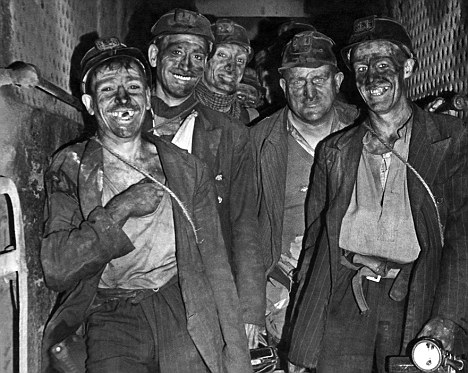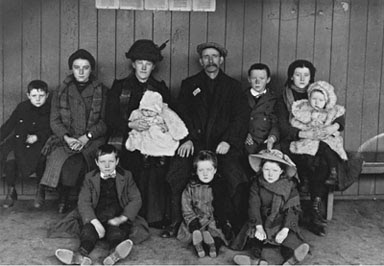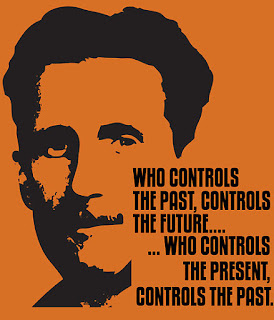Social Rights Versus Equality of Races
UN Covenant on Social Rights
These social and economic rights, however, were first formulated within the context of the nation states of Europe intended for the native population. The key rationale in their formulation, by socialistic liberals in the late 19th century to early 20th century, was that civil rights on their own (equal rights to freedom of expression, equal treatment under the law, religious freedom) were inadequate since many members of the nation were too poor to make full use of these civil rights, and only government assistance would it be possible for all citizens to enjoy a level playing field in “the full development” of their “human personality”.
But in the aftermath of WWII, Western liberals began to argue for the extension of these rights to humans across the world, leading to the formulation of this treaty in 1966. Although this was an international covenant, the proponents of these rights were Westerners. Non-European nations, to this day, have generally ignored these rights. And those nations like Japan, which developed the wealth necessary to afford them, could not care less whether other nations live up to these rights. Only Western liberals have made it a matter of principle and conscience to work for the successful application of these rights around the world.
The New Ideology of the Equality of Races after WWII
This new ideology, which is not intrinsic to the concept of social rights, found full expression after WWII in three major political movements:
- “the struggle for decolonization” in the period from about 1948 to 1965, that is, the demand by colonies of the West to be granted national self-determination;
- the struggle against racial segregation in the United States, or the civil rights movement for equality under the law between Whites and Blacks from about 1955 to 1965;
- the struggle for the elimination of White-only immigration policies in the settler states of Canada, America, and Australia during the 60s and 70s.
All these movements were driven by the new ideology of the equality of races. This is not to say that the right of all peoples to national or ethnic self-termination, the movement against the division of the world into colonized and colonizer nations, can’t be supported without acceptance of the ideology of the equality of the races. Just as the concept of social rights is conceptually independent from the notion of racial equality, so is the principle of national self-determination conceptually independent from both social rights and the equality of races. One can agree that all peoples have a right to self-determination on the grounds that the racial and ethnic differences of peoples is a good thing. One can accept, on liberal principles, the notion of civil rights and economic rights within a nation, and argue for separate territories for different races. One can also argue that there is nothing in the principle of civic and social rights that calls for racial integration.
Likewise, there is nothing in the concepts of civic and social rights that precludes nations from excluding foreigners from enjoying these rights. It was only with the spread of the idea of the equality of the races that Westerners came to think that to be a true liberal believer in civic and social rights requires one to extend these rights to all humans across the world. The notion of the equality of races would transform the meaning of civic and social rights into human rights to be enjoyed by all humans regardless of nationality. Misusing Kant’s concept of “cosmopolitanism”, Western liberals in the last decades have brought about this conceptual change without any nationalist opposition.
One of a number of liberals involved in this conceptual transformation is the Turk Seyla Benhabib, Professor of Political Science and Philosophy at Yale University. In The Rights of Others: Aliens, Residents, and Citizens (2004), she redefines the notion of civic rights to mean human rights, from which point she then argues that insofar as everyone on the planet has human rights, it is “impermissible from a moral standpoint” to deny incorporating aliens and strangers, immigrants, refugees and asylum seekers into the existing liberal polities of Europe. Europeans, if they are to live up to the principles of civic and social rights, must extend these rights as human rights to immigrants wishing to come to Europe. The Europeans who reject this extension are fascists.
This is what socialists are arguing today. Socialists used to be for the protection of nationals against the importation of cheap labour; but now they have accepted the notion that all humans have human rights as equal members of the same human race, and that insofar as they have human rights, they have a right to migrate to Western nations and enjoy the same social rights as the natives.
This evident in David Abraham’s article, Immigration, Majority Rights, and Welfare State Solidarity, which is an assessment of Liav Orgad’s right wing “liberal theory of majority rights”. Abraham, Professor of Law at Miami University, has an extensive publication record dedicated to the promotion of economic rights for immigrants, against “neo-liberal globalization”, as the best way of integrating diverse ethnic groups within Western nations. Abraham wants his readers and students to believe that this extension of social rights to immigrants is what the liberal tradition calls for.
In what follows, which is a continuation of my assessment of Liav Orgad’s right wing “liberal theory of majority rights”, I will counter Abraham’s claim by relying on the “Anglocentric” socialist ideas of T.H. Marshall (1893-1981), a first formulator of the concept of social rights. The principle of social rights was never intended, and does not in principle entail, social rights for humans across the world and for immigrants. The latter is a cultural Marxist idea that was infiltrated into Western socialism by hostile elites.
The Flaw in Orgad’s Theory — Again
Orgad’s thesis is that the peoples of Europe have a legitimate right to restrict immigration in order to protect their majority culture. Orgad is correct that in the face of mass immigration, and the ever demographic growth of minorities, and the projected reduction of European majorities into “majority-minority” status, it would be absurd to keep pressing for the rights of minorities.
But Orgad’s theory amounts to no more than a call for the assimilation of immigrants to those cultural attributes of the majority culture that bespeak currently of tolerance, diversity, and constitutionalism.
Not long ago, roughly before WWII, one would be hard put finding calls for diversification in the Western liberal tradition. But liberalism has now been thoroughly colonized by hostile concepts; and so what Orgad, associated with the Hebrew University of Jerusalem, is defending is a cultural Marxist version of liberalism. His theory of majority cultural rights basically says that Western nations can continue to be immigrant nations as long as they protect the majority liberal culture, and that this is the best way to fight off “extreme nationalism”.
We believe at CEC, to the contrary, that civic rights were postulated in the context of highly homogeneous European states, and that these rights are being threatened by diversification and extension into peoples lacking a history and a disposition for these rights. Civic rights presuppose European ethnic self-determination, which is not inconsistent with the acknowledgement of the rights of historically rooted minorities to the degree that these minorities have shown a natural predilection to live up to the principle of civic rights. By the same token, liberal rights are consistent with the separation of peoples into different territories within which they may find their own national means of ethnic self-determination.
David Abraham’s Multicultural Social Rights
David Abraham’s objection to Orgad is simply that it is preferable to emphasize additional socialist spending as a way of integrating everyone within the nation’s multicultural setting, rather than promoting the cultural rights of majorities. A more open, broader, and tolerant sense of “we”, he argues, can be nurtured more effectively through “social equality” measures than through “normative principles, values, and institutions”. The best medicine, which would encourage the majority culture to feel at home, in their increasingly diversifying nations, is to fight neoliberal economic policies, which weaken immigrant integration.
In other words, what the majority tax-paying culture needs to do is fork out more money for the growing immigrant populations. The massive welfare states of Europe should forego whatever “neoliberal” economic policies they adopted in recent decades and expand welfare spending. Orgad’s call for greater majority protections, Abraham warns, is “very slippery” and can quickly create a climate in which illiberal views, such as those of Viktor Orbán in Hungary, become acceptable. The way to overcome the illiberal immigrants is to support them economically, educate them, given them pride in their heritage, and make them feel a home in Europe.
Many may think that Abraham is arguing in a consistently socialist manner; a social liberal who believes that welfare rights are essential to the integration of previously excluded groups into a common national culture, a patriot calling for national integration and loyalty. The truth is that all the welfare states of Europe were created for the sake of making the native White working classes feel that they were part of the national culture, by integrating them into the national economy and the educational system, in order to nurture a sense of ethnocentric identity with the heritage of their nation.
T.H. Marshall’s Anglocentric Social Rights
 |
| T.H. Marshall |
One of the theoretical strategies early socialists used in justifying the creation of welfare programs was to argue that liberalism was consistent with the inclusion of “social rights” into the concept of civic citizenship. The best known proponent of social rights in England was T.H. Marshall; an idea he first espoused in his 1949 essay Citizenship and the Social Class. Marshall observed that the British working classes lacked a sense of identity, national in scope, because they were existing on the margins. He further argued that the best way to nurture a British national identity was to afford workers with social rights, by which he meant a modicum of health care and educational facilities. Civic rights were not enough for workers since they lacked the means to participate fully as co-creators of the national culture beyond their localities.
It should be noted, if we are to keep Marshall’s ideas in historical perspective, that state spending on education started in Europe after the 1850s, on compulsory and free education for children, and on public health and sanitation, focusing mainly on the lower to middle classes, but then growing and benefiting the less skilled working classes through the first half of the twentieth century, though it was only in the 1950s and 1960s that Western countries saw full fledged programs, guaranteed income supplements, pensions, child welfare, disabled person’s benefits, etc, to establish an “adequate” living standard beyond bare subsistence.
Marshall was advocating ideas that would rationalize this expansion in the 1950s and 1960s. But he was not original in this respect; socialists had been arguing for these policies for decades. What was new about Marshall was his effort to argue that civil rights were not enough to integrate the working classes into the nation’s culture. Liberal theory needed to be expanded to include social rights as a matter of principle to give workers a sense of identification with the nation’s culture by giving them a fairer chance to develop themselves as individual members within the nation.
Marshall did not frame this argument in economic terms, in trade-union or Keynesian terms, but insisted that social rights would work to integrate the working classes into the national liberal culture of Britain. Moreover, when he spoke of the working class in Britain he meant the native-born English, by ethnicity, religion, and culture generally. Not surprisingly, as liberalism was taken over by cultural Marxists in the 1960s, and a new breed of feminist/anti-White liberals was born, Marshall’s conception of social rights was “criticized by many for only being from the perspective of the white working man”. Members of the hostile elite, in full control of academia in the 1970s, announced that Marshall was too “Anglocentric” (PDF) and no longer a “true” liberal.
This is a subject requiring further study; suffice it to say that major conceptual alterations and additions transpired within liberal theory after WWII, from the time of Marshall to the time of Abraham.
One can certainly find reasonable objections to Marshall’s concept of social rights on economic grounds and on libertarian grounds. The point at hand is that the concept of social rights is not inconsistent with a nation that believes in civic rights, freedom of expression, separation of church and state, representative institutions, and at the same time opposes open borders and encourages ethnic pride in their citizens. What is inconsistent is the notion that social rights presuppose the creation of nations dedicated to the integration of foreigners as immigrants with social rights. The historical and theoretical evidence does not support this extension.







